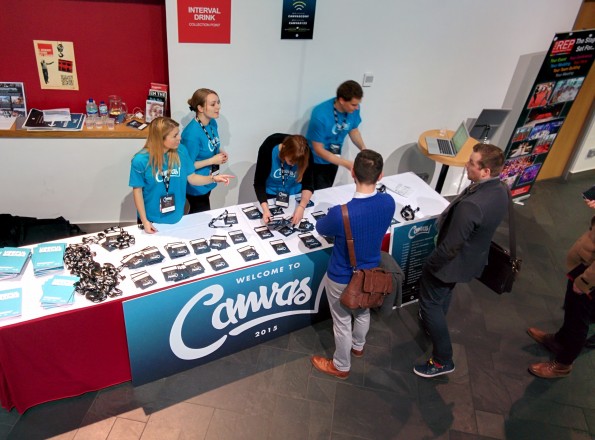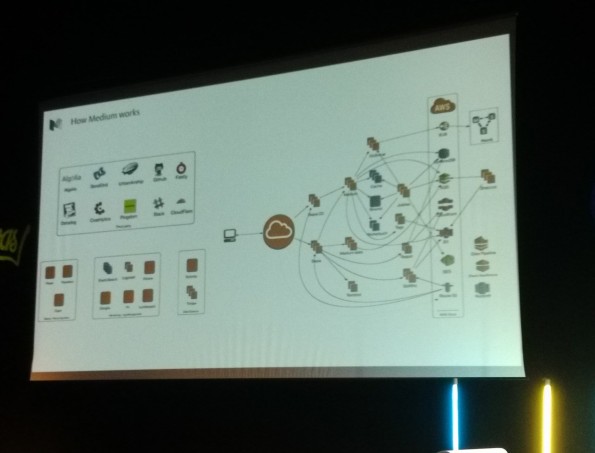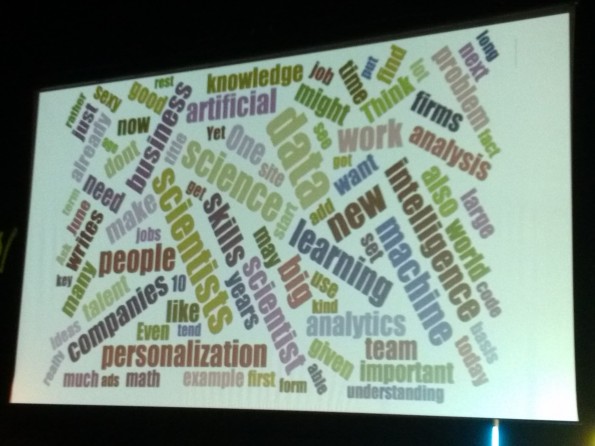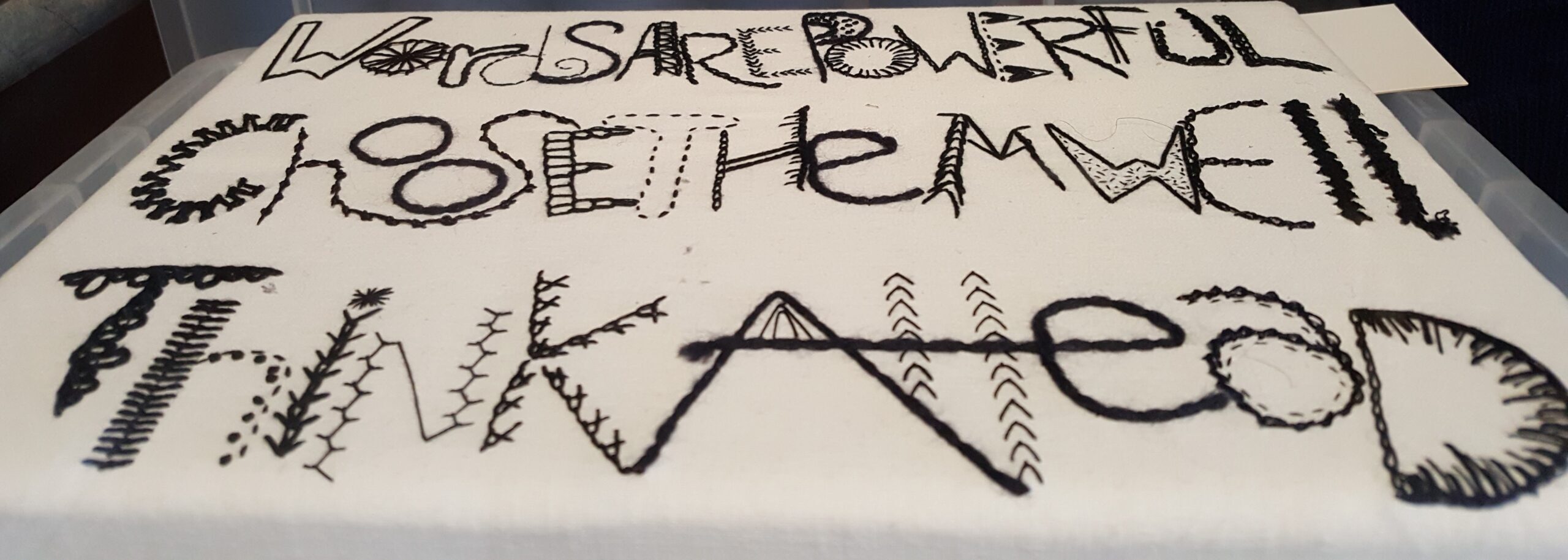On the 22nd October I attended the fourth Canvas Conference, hosted by 383 Project, in the Birmingham Library. 383 describe their digital product event as:
“revealing the insider stories from teams building some of the world’s most useful products & services. Over a one day conference, you’ll hear from people who are solving problems at the intersection of technology & business.”

The day included ample time to socialise and network. I personally spoke to people who had travelled from as far a field as Brighton, Belfast and even mainland Europe for the day. A great moment when Birmingham is attracting delegates from the South-east and London.

This year the full range of talks focused exclusively on digital products and services; a nice change from 2014 when some of the speakers chose a broader ‘operational’ theme to their segments.
There were eight speakers in total :
Tom Guy | Hive:
“Designing the next generation of smart home products for the home.”
Covered the development of the product and customer experiences, from working as a start up within a traditional utility company, through to hiring Yves Behar to conceptualise product development. The process of the product’s journey was the thread of this talk and the importance of usability and intuitive design being central to the creation of Hive. A really enlightening piece of an innovative move by British Gas to differentiate themselves in their industry,
Julien de Preaumont | Withings
“Creating connected objects that bring technology into your everyday life.”
Withings create health products with intelligence. Like Hive, the UI and UX is of paramount importance and as a company Withings have kept the basic functions of, for example, electric scales, whilst overlaying additional function and integration with devices such as smart phones and smart watches. As a brand Withings are very much working within the sphere of dominant digital trends, namely the internet of things and also health tech. Combining with this the design aesthetic for products that would usually be ugly (think things like NHS blood monitors) they are responding to the needs of an ageing population who are used to every objects having a sophisticated finish, as well as recording personal data for future use.

“Building a community of readers and writers offering a unique perspective on ideas, large and small.”
Medium is a web based publishing interface that allows users to write around what they are passionate about. The social element is crucial. Medium are interested in extrapolating data from their site to make the experience more personal and intuitive, as well as improving upon the traditional blog/forum/comment experience that typifies internet discussion. Readers have the ability to comment inline as well as at the end of the articles. Unlike the traditional interface, comments are hierarchied against your own network on the site. Those from your followers or those you follow are listed first. Design is considered and consistent across different screens and platforms.
Probably the most interesting aspect of Joe’s talk was the diagrammatic overview of the Medium tech’ eco-system. it was huge! Integrating systems from cross-screen synchronisation to email data visualisation, allows Medium to cut and analyse data in way that are not possible in many organisations.
In clustering content by keyword, topic and author Medium have been able to use semantics to suggest links to content groupings with surprising benefits. They discovered that spammers had begun using the site and tended to associate their posts with certain categories and keywords. Clustering those content allowed Medium to identify and remove spam far more effectively as a result.
Liz Crawford | Birchbox
“Helping customers discover the best in beauty, grooming and lifestyle products.”
Birchbox are a pureplay brand that has recently moved into bricks and mortar retailing. The whole offering is based around personalisation, from the customer journey, working from beginning to end, to the discovery box content.
Birchbox consider their each customer as a whole, and understand that their customers see the brand as a whole, not a bunch of connected components – email, app, store, packaging. Like many of the other speakers Birchbox create a physical product, however with something as subjective a beauty and grooming, the cost of making mistakes with such a physical product is much higher. Birchbox employ data analysis and learning at all stages of their customer journey to build up a picture of their consumer over time. They have learned to detect changes in the state of their customers and respond to each individually, rather than to a schedule driven by a marketing calendar.

I particularly enjoyed this talk, one of the few given by a woman in a high level tech’ role and Liz’s obvious confidence with the mathematical aspects of the role she undertakes. The complexity of the data handles by Birchbox was huge and the algorithmic analysis that allows it to orchestrate the customer facing side of Birchbox was explained in simple and relevant terms to the audience – a inspirational approach to what could have been a dry topic.
Dave Wascha | Travelex
“Creating a smart digital payment card for travellers.”
Travelex work in a traditional industry and have decided to gain the edge by leading disruption rather than being subjected to it. They have gone back to basics and examined the challenges their consumers face; understanding currency exchange, keeping cards safe when abroad, reducing reliance upon their banks and the fees that they charge.
Product responses to these include a currency conversion app featuring a drag facility that demonstrates currency conversion and fees on an increasing / decreasing scale and a card that allows the user to register a number of cards against it, negating the need to carry them out whilst on hoilday. The same product also spoofs withdrawals abroad being made from within the UK. In the first 6 months beta test with 25,000 users the card has saved in excess of £500,000 in forign withdrawal and card usage fees.
As well as being an engaging speaker, Tom told the story of the Travelex brand in a contrasting fashion to the previous speakers. He was able to draw comparisons with both Hive and his own work in Travelex’s decision not to create a new standalone brand as the history of the company was one of innovation, despite it’s string brand heritage and recognition.
The first half of the event was engaging and was brilliant as exposing some real life examples of the kinds of trends we have heard bandied about for a while; the internet of things, the semantic web, pureplay and retail brands crossing over into each others space.
The conference featured a further five speakers who I will follow up on at a later date owing to the size of the post. Hopefully this will be enough to whet your appetite and potentially order tickets to next years event.
